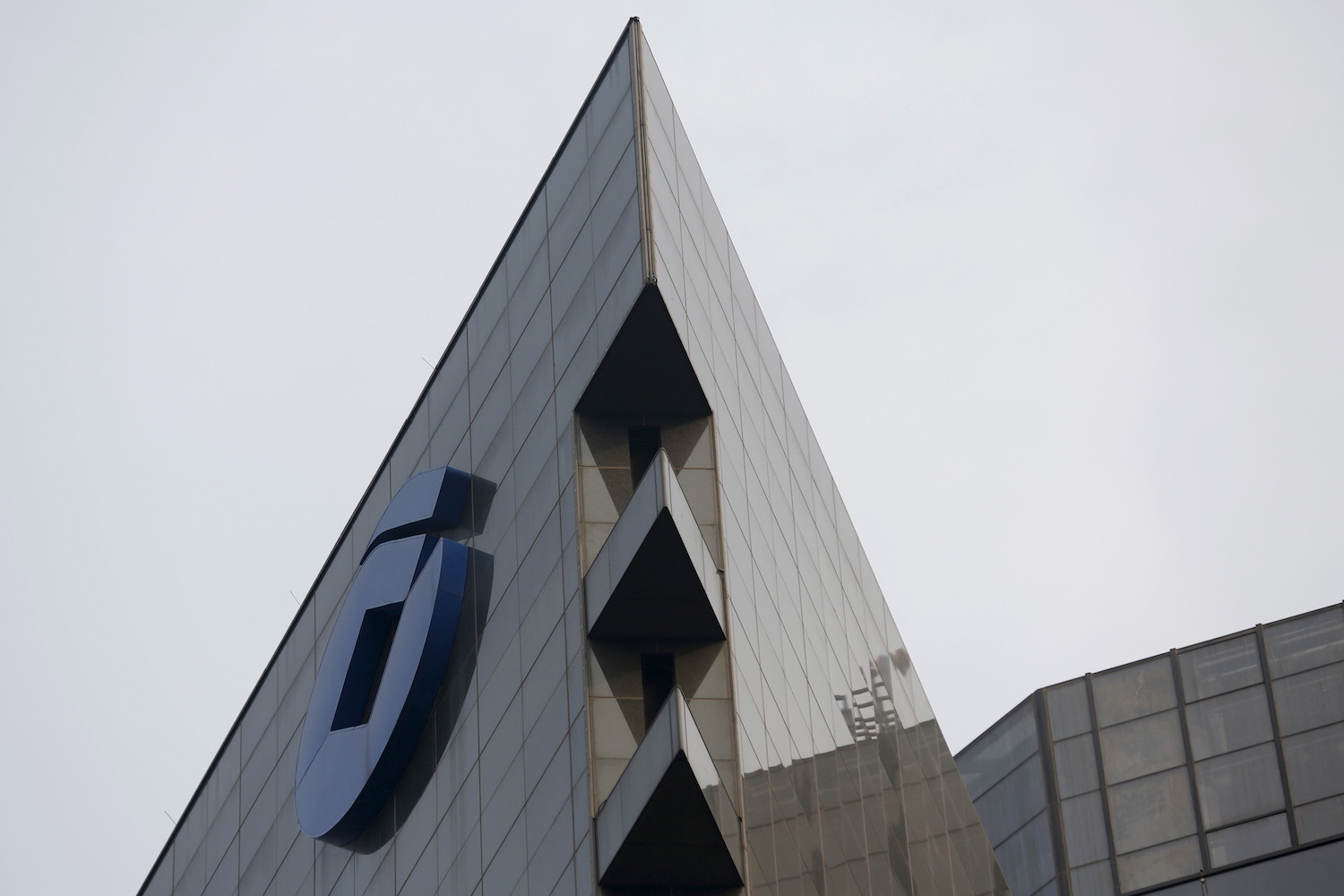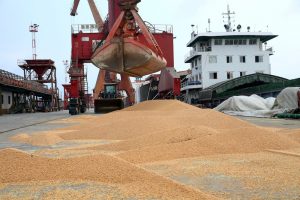(ATF) Late on Sunday, August 30, China’s biggest banks announced their semi-annual reports – and all recorded a double-digit plunge in profits.
ICBC, the Agricultural Bank of China, Bank of China, China Construction Bank, and the Postal Savings Bank all suffered close to double-digit profit losses. The Bank of Communications, the other member of the ‘Big Six’ can be added to that, as it had similar results last Friday.
Total net profit of the six major banks in the first half of 2020 fell 11.2% year-on-year. However, from the perspective of major regulatory indicators and credit support, the basic operating system remains stable, according to Shanghai Securities News.
The reasons for the decline in net profit is partly to prevent pressure of non-performing loans in the future, and increase the amount of provisioning. On the other hand, “we will share the wind and rain” with the real economy and increase efforts to reduce fees and profit, the paper said.
Significant declines
The semi-annual reports showed that net profit of the six major banks (attributable to shareholders of the parent company) in the first half of this year totalled 566.33 billion yuan (about $82.7 billion). In the same period last year, the net profit of the six major banks totalled 637.744 billion yuan. Based on this calculation, the total net profit of the six major banks fell 11.2% in the first half.
Separately, except for the Postal Savings Bank, where the net profit fell by 9.96%, the net profit of the remaining five banks all fell by double digits: ICBC achieved a net profit of 148.79 billion yuan in the first half, which was a year-on-year decrease of 11.4%; the Agricultural Bank of China’s net profit was 108.834 billion (a drop of 10.4% on 2019); the net profit of the Bank of China was 100.917 billion yuan, a year-on-year decrease of 11.5%; the net profit of China Construction Bank was 137.626 billion yuan, a year-on-year decrease of 10.74%; the net profit of Bank of Communications was 36.505 billion yuan, a year-on-year decrease of 14.61%; while the net profit of Postal Savings Bank was 33.658 billion yuan, a year-on-year decrease of 9.96%.
But all of these banks meet regulatory requirements and are operating solidly. The non-performing loan rate ratio as of the end of June was 0.89% at the Postal Savings Bank, and that of the Bank of Communications was 1.68%. In regard to the capital sufficiency ratio, for example, as of the end of June, the capital adequacy ratio of the Agricultural Bank of China was 16.42%, an increase from the end of last year by 0.29 percentage points.
Provision for bad loans hiked
Behind the decline in net profit is not poor management. The semi-annual report shows that the pre-provision profits of all banks have performed well. For example, in the first half of the year, ICBC achieved a pre-provision profit of 314.807 billion yuan, a year-on-year increase of 2.1%; Bank of China’s operating income and pre-provision profit both saw steady growth, while CCB’s pre-provision profit was 280.339 billion yuan, a year-on-year increase of 5.4%.
The information disclosed in the semi-annual report shows that the decline in net profit stems from the “preventive measures” of non-performing assets, strict implementation of classified regulatory requirements, and increased provisions.
ICBC’s semi-annual report shows that the bank has continued to strengthen its risk compensation capabilities. In the first half, it accrued various asset impairment losses of 125.456 billion yuan, a year-on-year increase of 26.5%, most of which were loan impairment losses (111.705 billion yuan), an increase of 21.6%.
Meanwhile, CCB, in the first half, accrued a credit impairment loss of 111.378 billion yuan, an increase of 49.22% year-on-year. Its ratio of loss provisions to total loans was 3.34%, and the provision coverage ratio was 223.47%, a relatively high level.
Ratios of provision and coverage for non-performing loans at the Bank of China and Postal Savings Bank of China rose from 182.86% and 389.45%, respectively, at the end of last year to 186.46% and 400.12%, respectively, indicating sufficient risk offset capability.
Previously, Guo Shuqing, chairman of the China Banking and Insurance Regulatory Commission, pointed out in an interview with the media that it was necessary to prepare enough “ammunition” to resist risks, requiring banks to take a variety of methods to replenish capital, increase provisioning in advance, and improve future risk resistance.
Net interest margins decline
Another reason for the decline in net profit is the reduction in fees and concessions to the real economy, which further reduces corporate financing costs. A comprehensive semi-annual report shows that the net interest margins of the six major banks have basically declined.
Among them, ICBC, China Construction Bank, and Postal Savings Bank of China saw larger declines. ICBC’s net interest margins were 1.98% at the end of the first quarter and 2.13% at the end of Q1, respectively, down 15 basis points and 16 basis points year-on-year. CCB’s net interest margins were 1.99% and 2.14%, respectively, a year-on-year decrease of 13 basis points. The Postal Savings Bank’s net interest margins were 2.36% and 2.42%, respectively, down 15 basis points and 13 basis points from the same period last year.
According to the semi-annual report of the Agricultural Bank of China, the bank’s net interest margins were 1.98% and 2.14% in the first and quarters, a decrease of 4 basis points and 2 basis points year-on-year, respectively.
The Agricultural Bank explained that on the one hand, investment and financing business yields fell due to a decline in market interest rates, while loan yields fell year-on-year due to a decline in the loan market quoted interest rate (LPR) and the implementation of national interest concession policies.
China Construction Bank stated that the bank has increased reduction and exemption measures on the basis of its original service fee measures. In the first half of the year, the inclusive loan interest rate fell by 63 basis points year-on-year.
Lagging impact
In the future, the challenges that the Big Six banks face will remain. The Agricultural Bank’s semi-annual report predicts that the lagging impact of the epidemic and the risk of uncertainty are expected to be further transmitted to the banking industry. With the benefit of the real economy and asset quality under pressure, the banking sector’s operating performance may face greater downward pressure.
The results highlight the impact of the pandemic and the economic slowdown on Chinese banks that bucked the first-quarter global trend with higher profits and steady bad loans.
As the pandemic batters economies globally, the Bank of China, which is the most international of China’s large state banks, said it would keep guarding against global financial market risks in the second half.
Overall, Chinese commercial banks overall posted a 9.4% drop in first-half net profit to 1 trillion yuan, according to data from the China Banking and Insurance Regulatory Commission.
By the end of the June quarter, the average nonperforming loan ratio for commercial banks was at 1.94%, commission data showed, the highest since 2009.
($1 = 6.8647 Chinese yuan renminbi)
With reporting by Reuters
























